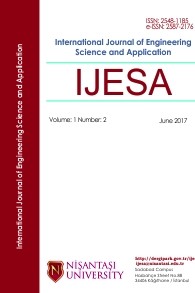Numerical study of the hail impact on PV Panel by specific constitutive models
Numerical study of the hail impact on PV Panel by specific constitutive models
Glass, Hail, LS-Dyna, Smooth Particles Hydrodynamics (SPH) Stochastic Variance,
___
- Reference1 Field.P.R, H.W., Cappelluti G., McMillan A.,Foreman A., Stubbs D. and Willows M., Hail Threat Standardisation - EASA, in Final Report EASA_REP_RESEA. 2009.
- Reference2 Gupta, V., et al., Comprehensive review on effect of dust on solar photovoltaic system and mitigation techniques. Solar Energy. 191: pp. 596-622, August 2019.
- Reference3 Li, M., et al., A Statistical Analysis of Hail Events and Their Environmental Conditions in China during 2008-2015. Journal of Applied Meteorology and Climatology. 57, December 2018.
- Reference4 Xie, Q., Numerical modeling of the stress-strain state of the ice beam by specified constitutive model. Material Science, Engineering and Applications. 2(1): pp. 1–8, January 2022.
- Reference5 S471-04-General requirements, design criteria, the environment, and loads, Canadian Standards Association Mississauga, Ont. 2004.
- Reference6. Schulson, E.M., The structure and mechanical behavior of ice. JOM Journal of the Minerals Metals and Materials Society. 51(2): pp. 21-27, February 1999.
- Reference7.Jones, S.J., A review of the strength of iceberg and other freshwater ice and the effect of temperature. Cold Regions Science and Technology. 47(3): pp. 256-262,February 2007.
- Reference8.Anghileri, M., et al., A survey of numerical models for hail impact analysis using explicit finite element codes. International Journal of Impact Engineering. 31: pp. 929-944, September 2005.
- Reference9. Kimand, H. and K. Kedward, Experimental measurement and Numerical prediction Hail Ice Impacts and Predicting Impact Damage Initiation in Composite Structures. Aiaa Journal - AIAA J. 38: pp. 1278-1288, September 2000.
- Reference10.Daryadel, S.S., et al., Dynamic response of glass under low-velocity impact and high strain-rate SHPB compression loading. Journal of Non-Crystalline Solids. 432: pp. 432-439,August 2015.
- Reference11 Yong, M., L. Iannucci, and B.G. Falzon, Efficient modelling and optimisation of hybrid multilayered plates subject to ballistic impact. International Journal of Impact Engineering.37(6):pp.605-624,July 2009.
- Reference12 Mazonka, O., Cumulative Probability of Blast Fragmentation Effect. arXiv: General Physics, 2013.
- Reference13 Libersky, L. and A. Petschek, Smooth particle hydrodynamics with strength of materials', in Advances in the Free-Lagrange Method. pp. 248-257.January 2006.
- Reference14 Hu, D., et al., Analysis of explosion in concrete by axisymmetric FE-SPH adaptive coupling method. Hu, Dean. 31, May 2014.
- Reference15 Gary A. Dilts, Moving least-squares particle hydrodynamics ii: conservation and boundaries, Int. J. Numer. Methods Eng. 48(10): pp. 1503-1524, June 2000.
- Reference16 Limido, J., et al., Modeling of Hypervelocity Impact Experiments Using Gamma-SPH Technique. V004T004A021. October 2017.
- Reference17 Molteni, D. and A. Colagrossi, A simple procedure to improve the pressure evaluation in hydrodynamic context using the SPH. Computer Physics Communications.180(6):pp.861-872,December 2008.
- Reference18 Chen, J.K., J.E. Beraun, and C.J. Jih, An improvement for tensile instability in smoothed particle hydrodynamics. Computational Mechanics. 23: pp. 279-287, May 1999.
- Reference19 ANSYS, Workbench LS-DYNA (ACT Extension) Training, in Element formulations. 2016.
- ISSN: 2548-1185
- Başlangıç: 2016
- Yayıncı: Nişantaşı Üniversitesi
Numerical study of the hail impact on PV Panel by specific constitutive models
Şehri Nur GÜLER, Kamil Çağatay BAYINDIR, Adnan TAN
AN OVERVIEW OF THE APPLICATION OF ARTIFICIAL INTELLIGENCE IN WATER ENGINEERING
Backstepping Approach Based on Direct Power Control of a DFIG in WECS
